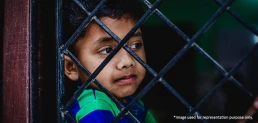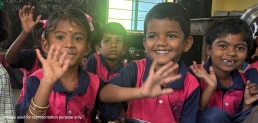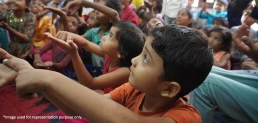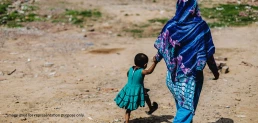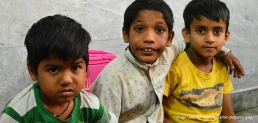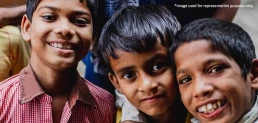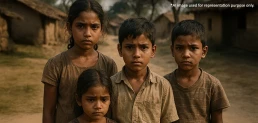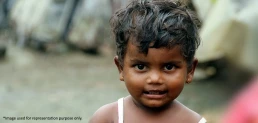Though there has been progressive development in relation to education, child growth, development, and child welfare in India, there is a severe concern about child labor. These children, instead of being in classrooms, are often seen in fields, factories, roadside stalls, or homes, exposed to danger, exploitation, and a complete lack of childhood.
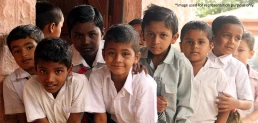

Child labor deprives children of their right to education, health, protection, and opportunity. It continues to trap them in cycles of poverty, often lasting generations. Although child labor laws in India, including the Child and Adolescent Labor (Prohibition and Regulation) Act, have become more stringent, the issue is far from resolved. Multiple social and economic pressures push families to send their children to work at a young age, especially in rural or marginalized communities.
Learning the child labor laws and their practical work can be important to create a level of awareness, legal adherence, and change in the system. However, the reform of the law cannot give a full answer. Empowered communities, government intervention, access to education, and partnership with civil society should bring change at the grassroots level. That is where organizations such as CRY can be very effective.
CRY does not just push governments to pass stricter laws to prevent child labor, but it also goes to the root of the houses to empower the children, help their families, and educate the constituency.
Also Read: Child Labor
What Are Child Labor Laws and Why Do They Matter?
“Child labor laws” are legal frameworks that:
- Define minimum working ages for children and adolescents
- Ban harmful or exploitative work involving minors
- Regulate working hours and conditions for underage workers
- Specify penalties for violators
- Promote rehabilitation channels such as education and skill training
These laws matter because they:
- Prevent children from missing school
- Protect physical and mental health
- Uphold the constitutional right to education under Article 21A.
- Ensure children grow into healthy, capable adults
- Break the cycle of intergenerational poverty
Also Read: What is Child Labor
Key Laws Protecting Children from Labor in India
Child Labor (Prohibition and Regulation) Act, 1986
India’s central legislation on child labor covers:
- “Child”: Under 14 years old; “Adolescent”: 14–18 years, per Section 2 definitions
- Prohibition of child employment in hazardous occupations and processes (Part A & B of the Schedule)
- Regulation of work conditions, working hours, and break times for non-prohibited roles
- Inspection, register-keeping, and penalties under Part IV
Major Changes Under the 2016 Amendment
- An extended total ban on all work for children under 14, except in family businesses or entertainment, provided education isn’t affected.
- Introduced a special category “Adolescent” (14–18 years), restricting their employment in hazardous jobs
- Strengthened enforcement: Made offenses cognizable, increased penalties, and enabled District Magistrates to conduct inspections
- Established the Child & Adolescent Rehabilitation Fund for rescued children
- Empowered the Central Government to revise the hazardous occupations list dynamically
Also Read: Combating Child Labor for a Promising Future for India’s Children
What the Law Allows and What It Forbids
Banned Occupations and Hazardous Processes
Under the Act, children under the age of 14 are strictly forbidden:
- Mining, asbestos, and railway work
- Working with heavy objects, explosives, or poisonous chemicals
- Brickworks, steelworks, bone works, and glassworks
- Any job or procedure considered risky by the schedules listed by the government
Legal Exceptions: Family Enterprises & Entertainment
Licensed arrangements give children the permission to:
- Work in family-based companies (not hazardous) after school or holidays
- Work in audio-visual/entertaining aspects (movies, athletics) and occupations that shall not interfere with education
- Exceptions to this are only applied where work is not jeopardizing education
Work Conditions Permitted for Adolescents Aged 14–18
Non-hazardous work may be performed by adolescents (14 to 18 years); in this case, the permitted employment is strictly regulated:
- No more than 6 hours of work a day, either at school or at work
- No work during school time
- The employers need to comply with health and safety practices, yearly medical examinations, and satisfactory remuneration
Also Read: Child Labor in India
How Child Labor Laws Are Enforced?
Enforcement relies on multiple mechanisms:
- Labor Department inspections and surprise raids in high-risk sectors
- Authorized Inspectors maintain registers and file reports
- District Magistrates are authorized to inspect and act swiftly post-amendment
- Penalties include fines (up to ₹50,000) and jail terms (up to 2 years); offenses made cognizable
- National Child Labor Project (NCLP): Rescues and rehabilitates children aged 9–12 with non-formal education, midday meals, stipends, and healthcare.
Also Read: Understanding Child Labor In India
Why Child Labor Still Exists Despite Legal Provisions
Socio-Economic Pressures and Poverty
- Families in poverty rely on children to boost household income
- Lack of alternate income sources forces acceptance of child labor
- Regions affected: brick kilns, agriculture, stone quarries, small workshops
Lack of Awareness Among Families and Employers
- Many families remain uninformed about what is child labor laws
- Employers exploit legal knowledge gaps, paying children less for long hours
- Remote areas often lack access to legal literacy, registration systems
Other challenges include weak monitoring, understaffed enforcement, and exceptions (family work, entertainment) being misused, leading to child labor continuing unmonitored.
Also Read: Vaccination of Infants
CRY Efforts to Stop Child Labor
Aligned with national laws, CRY implements community-based interventions that combat child labor through education and empowerment.
Community Awareness & Mobilization
- Workshops through Village Child Rights Committees explain legal rights and penalties
- Employer awareness drives to stop the use of child labor
Enabling Education and Rehabilitation
- Support for bridge schools and vocational training for rescued children
- Educational continuation plans under NCLP and midday meal programs
Economic Support for Families
- Microgrants and livelihood programs reduce families’ dependence on child income.
- Incentive-based programs encourage school attendance.
Collaboration with Authorities
- Support District Magistrates and labor inspectors in identifying and freeing children
- Track rescued children to prevent regression into labor.
Monitoring and Strengthening Child Labor Policies
- Use ground data to strengthen the implementation of child labor laws
- Push for increased funding of NCLP and stricter labor code provisions
Your support can help end child labor. Donate to CRY America and protect every child’s right to a free and safe childhood.
Also Read: Child Labor Laws
FAQs
At what age can a child legally work in India?
As per the Child and Adolescent Labor (Prohibition and Regulation) Act, 1986, children below 14 years are not allowed to work in any occupation or process, except in family enterprises or entertainment (non-hazardous and outside school hours). Adolescents aged 14–18 years are allowed to work only in non-hazardous occupations. Hazardous jobs are strictly prohibited for all individuals under 18. These rules aim to safeguard children’s rights to education and protection.
What jobs are prohibited for children in India?
Children under 14 are completely prohibited from working in any occupation or process. The government has defined a list of hazardous occupations under the Act, including mining, bidi-making, fireworks, slaughterhouses, and working with toxic chemicals or heavy machinery. Even adolescents (14–18 years) are banned from hazardous industries. This list is reviewed periodically by the Ministry of Labor & Employment to reflect changing work environments and protect children’s physical and mental well-being.
What happens when an employer is caught using child labor?
Employers found engaging children in prohibited work can face imprisonment of 6 months to 2 years and a fine of ₹20,000 to ₹50,000 under the 2016 amendment to the Act. Repeat offenders face stricter penalties. Offenses are considered cognizable, meaning arrests can be made without a warrant. Authorities may also take steps to rehabilitate the child through education, vocational training, and compensation, as per the rules of the Child and Adolescent Labor (Prohibition and Regulation) Act.
Are children allowed to work in family businesses?
Yes, children under 14 are allowed to assist in family businesses only if the work is non-hazardous, done outside school hours or during holidays, and does not affect their education or health. “Family” refers to parents or siblings, not extended relatives or outsiders. However, this exemption is often misused, so close regulation is advised. The government monitors such cases through inspections and local child protection committees to prevent exploitation under the guise of family work.
Recommended for you











